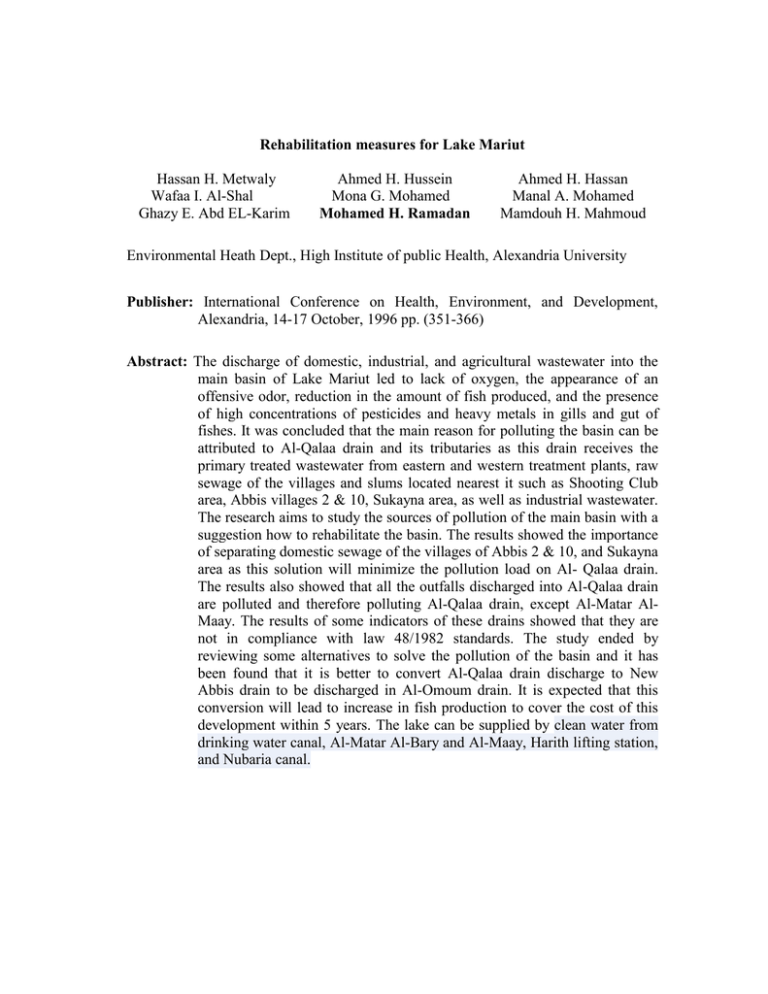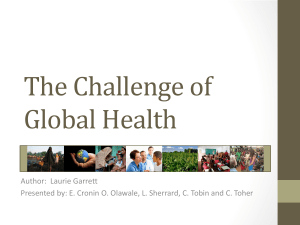31694.doc
advertisement

Rehabilitation measures for Lake Mariut Hassan H. Metwaly Wafaa I. Al-Shal Ghazy E. Abd EL-Karim Ahmed H. Hussein Mona G. Mohamed Mohamed H. Ramadan Ahmed H. Hassan Manal A. Mohamed Mamdouh H. Mahmoud Environmental Heath Dept., High Institute of public Health, Alexandria University Publisher: International Conference on Health, Environment, and Development, Alexandria, 14-17 October, 1996 pp. (351-366) Abstract: The discharge of domestic, industrial, and agricultural wastewater into the main basin of Lake Mariut led to lack of oxygen, the appearance of an offensive odor, reduction in the amount of fish produced, and the presence of high concentrations of pesticides and heavy metals in gills and gut of fishes. It was concluded that the main reason for polluting the basin can be attributed to Al-Qalaa drain and its tributaries as this drain receives the primary treated wastewater from eastern and western treatment plants, raw sewage of the villages and slums located nearest it such as Shooting Club area, Abbis villages 2 & 10, Sukayna area, as well as industrial wastewater. The research aims to study the sources of pollution of the main basin with a suggestion how to rehabilitate the basin. The results showed the importance of separating domestic sewage of the villages of Abbis 2 & 10, and Sukayna area as this solution will minimize the pollution load on Al- Qalaa drain. The results also showed that all the outfalls discharged into Al-Qalaa drain are polluted and therefore polluting Al-Qalaa drain, except Al-Matar AlMaay. The results of some indicators of these drains showed that they are not in compliance with law 48/1982 standards. The study ended by reviewing some alternatives to solve the pollution of the basin and it has been found that it is better to convert Al-Qalaa drain discharge to New Abbis drain to be discharged in Al-Omoum drain. It is expected that this conversion will lead to increase in fish production to cover the cost of this development within 5 years. The lake can be supplied by clean water from drinking water canal, Al-Matar Al-Bary and Al-Maay, Harith lifting station, and Nubaria canal.








